
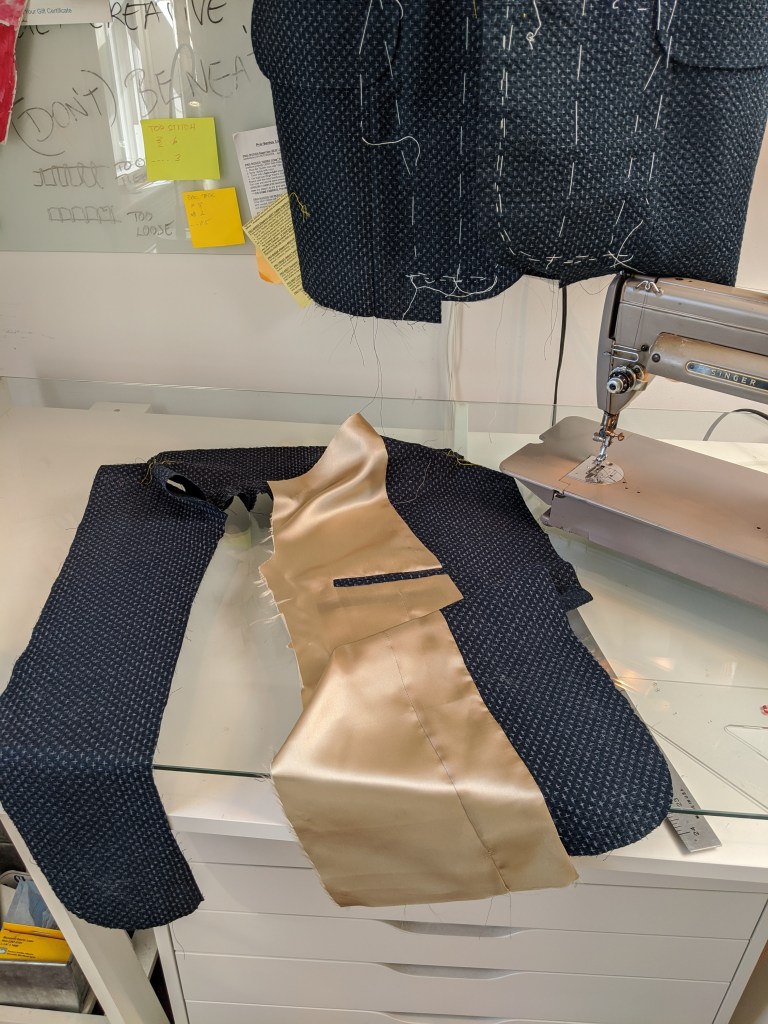
Eventually the lining has to be made. I’ll be honest with you, it’s my very least favorite part of any tailoring project. I have SO MUCH admiration for all the sewists out there who add piping, all kinds of little pockets and wildly curving seams. I just want it over and done with ASAP. So there are no sartorial feats of wonder inside my jackets. I’m more than happy to settle for a double piping pocket at the left chest. I’m too lazy to even put one on the right, since I would never use it.
Vogue 9262 includes pattern pieces for the lining. With the exception of a center back pleat, they are just duplicates of the main pattern pieces. There is no extra ease in the lining. I think this pretty much guarantees that the lining will rip out at some point, so I opt not to use them. Instead I use my pattern pieces and cut on an extra 1/8″ along the sides and 1″ -1 1/2″ at the armscye and sleeve caps.
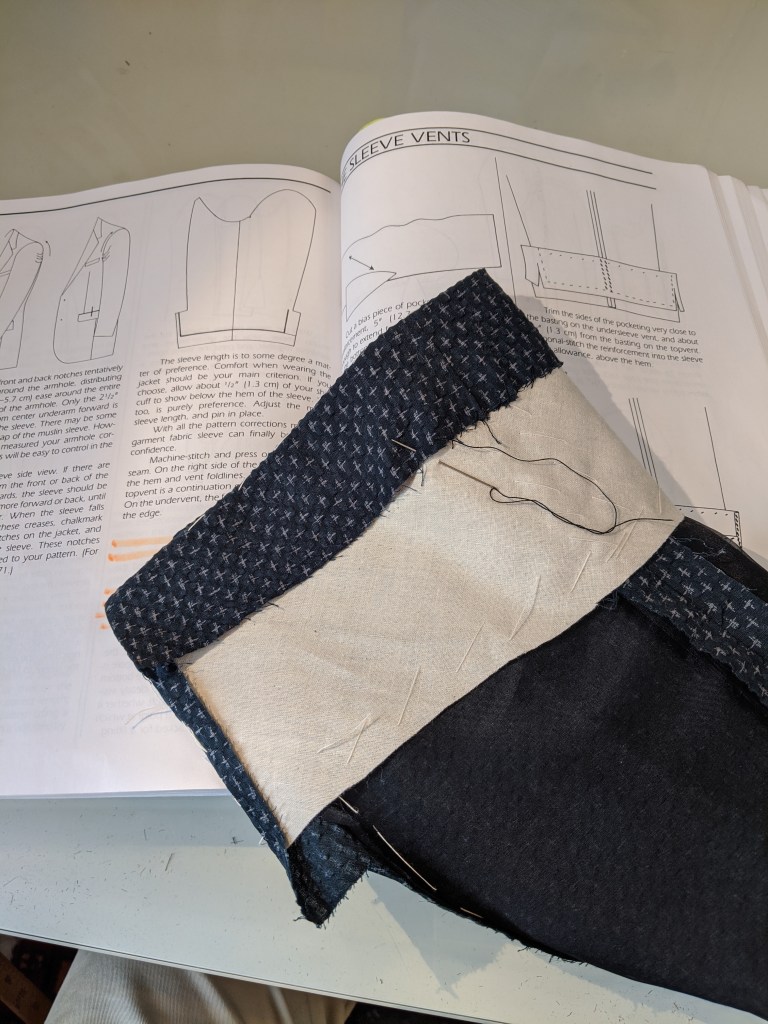
I’ve decided to add vents to the sleeves. After all, in my current “stay at home” condition, I have an abundance of time to complicate this make. The cuffs are reinforced with a wide strip of bias muslin. The jacket fabric is then hemmed to the muslin, resulting in a completely invisible hem.
It’s not very clear in these pictures, but the seam allowances of the lining are diagonally stitched to their corresponding seam allowances on the sleeve. Then the sleeve can be pulled up through the lining and everything will be in place for working the lining around the vent.

I have to confess that this is one of my least favorite tailoring tasks. There’s a lot of fussing around; slashing and folding and hand sewing. The slippery fabric only compounds the difficulty. I’ve found that the biggest help is to pull the sleeve up tight onto my sleeve board. It helps align the seam of lining with the seam of the sleeve. Then it becomes more obvious which side of the lining will have to be slashed, and which will just have to be folded over. I work it the best I can, hoping that no one will ever be peeking up my sleeves!
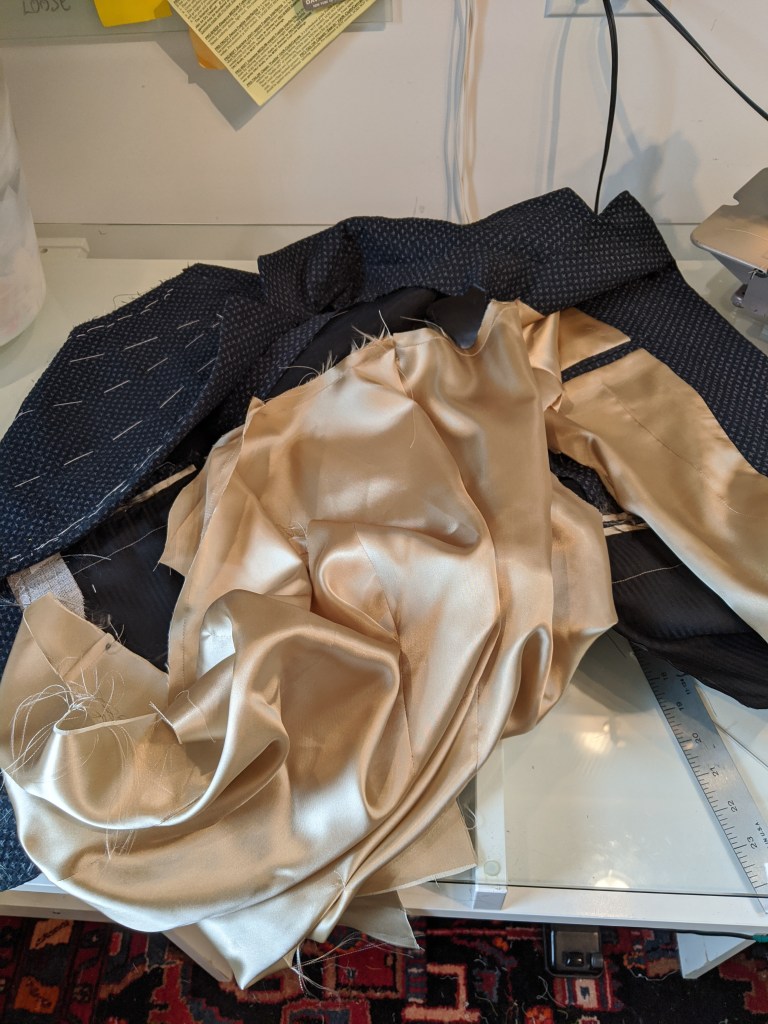
The rest of the lining gets put together, and then the whole ungainly slippery mess gets attached to the facings.

The facing (with its attached lining) is now sewn onto the jacket. The seam should be 1/16″ away from the tape. Rather than pinning, everything is being held in position by basting down through the twill tape. What you don’t see here is all the fabric, both the lining and the jacket, all piled up on your work table. It can be an unwieldy “package”, so you only want to sew this once. You’ll be very glad that you skipped the pins and basted the whole thing before sitting down to the machine.
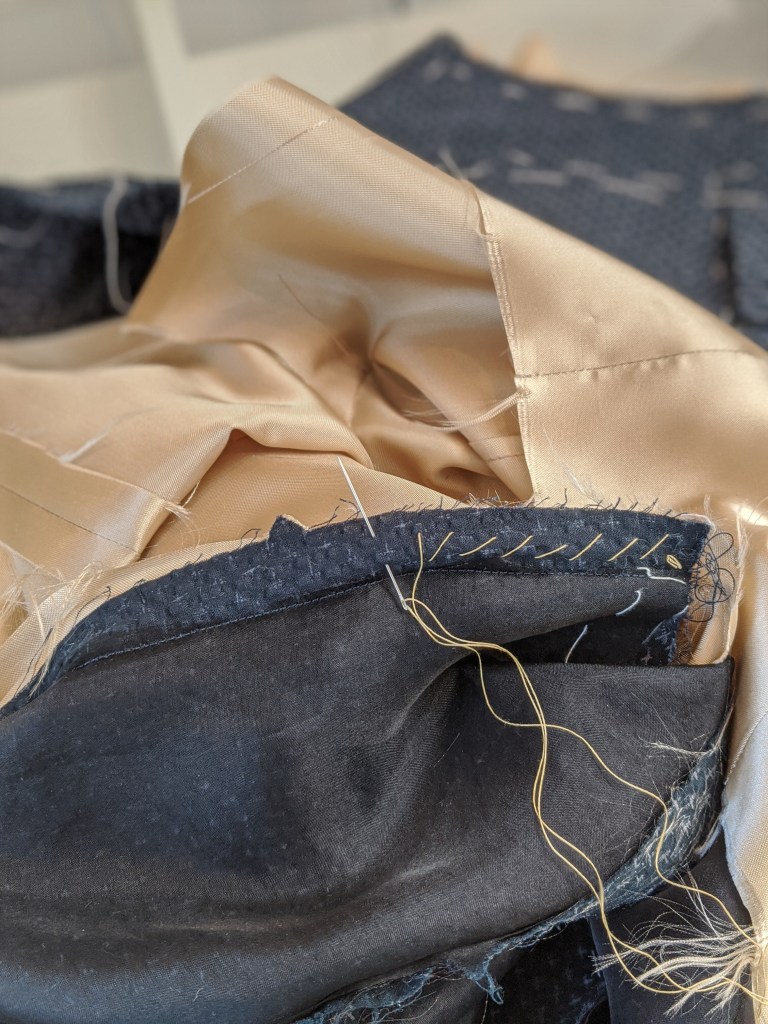
The lining is flapping around inside the jacket, so it gets secured by stitching the seam allowances together. It’s a little awkward, but it can be done. I use this quick diagonal stitch. It’s not pretty, but then again it never gets seen.
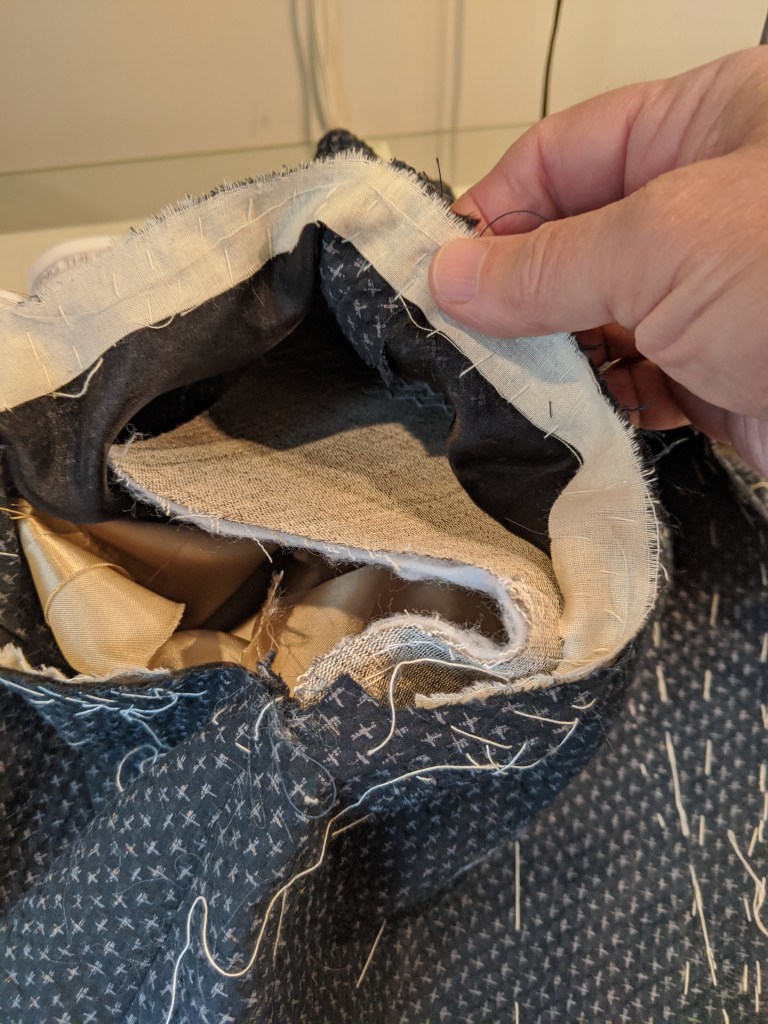
A strip of muslin is basted around the armscye as a reinforcement . A lightweight fabric like seersucker really needs this extra strength. The lining and the canvas have been pushed out of the way.
There’s a lot going on at the shoulder so progress slows way down. I just take it step by step. My goal is to get the sleeve set on the first go round. The last thing I want is to be unpicking the sleeve.
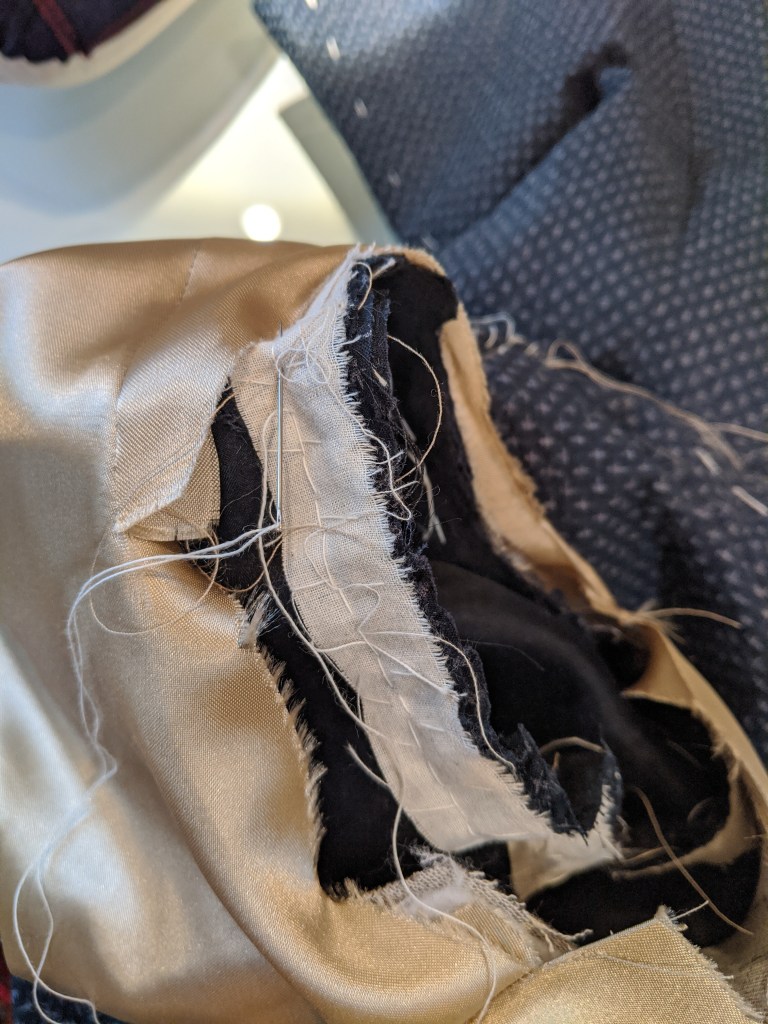
The sleeve gets basted in with short 1/4″ stitches. After going round once, a second set of basting stitches are placed in the spaces between the first round. Roberto Cabrera calls this a locking stitch.
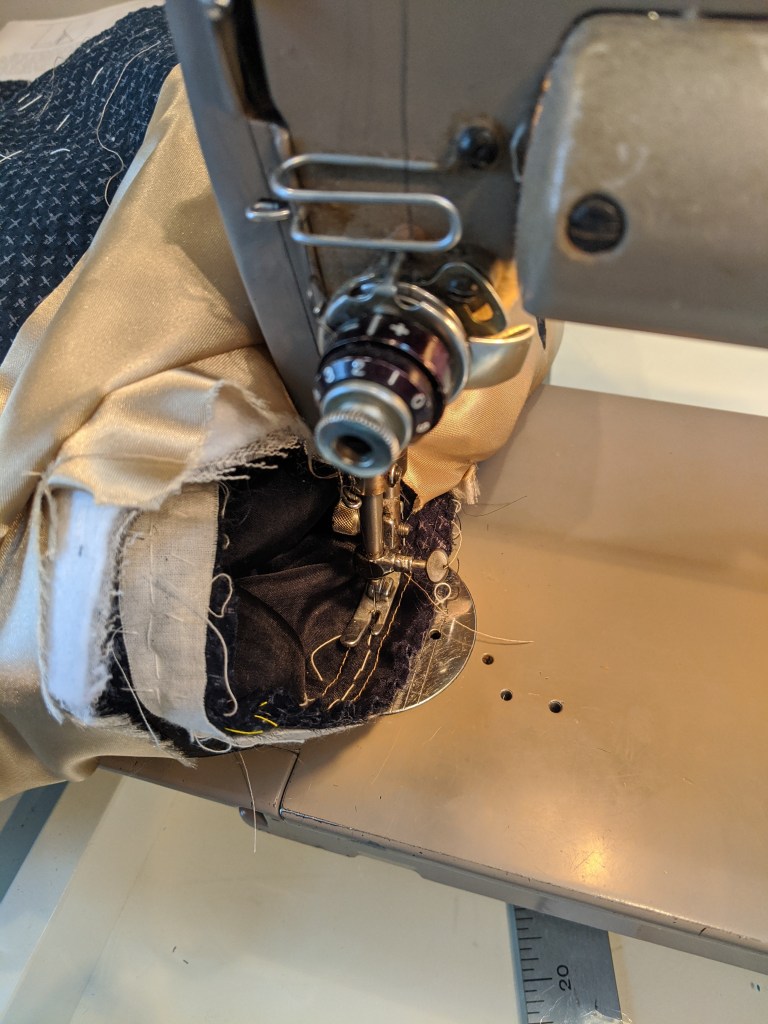
With the sleeve on top, the sleeve can be set without any pins. Yay! And the chance of any little catches are minimal due to the basting.

I have no progress pictures of the shoulder pads and sleeve heads that are sewn in. Sorry. It really takes all my concentration to accomplish those tasks, and it’s slow work. I’ve complicated the process because the lining is fully sewn at this point, so I’m frequently working underneath it. It can be done, but it’s awkward and frustrating at times.
Once the shoulder pads and sleeve heads are set, the sleeve lining can be brought up and slipstitched into place. I always find this step extremely satisfying. The sleeve lining will have to be eased in, and it may not be perfectly smooth. I love the handcrafted look of it; and rather than see it as a flaw, I see it as a quality that’s missing in our mass produced clothes. I was lucky enough to see the Charles James exhibit at the Met in 2014 and was struck by the very handcrafted nature of the gowns on display. I think back to that exhibit when doing this kind of finishing work. Our handwork is a luxury to be celebrated. (Even if it’s hidden up our sleeves !)
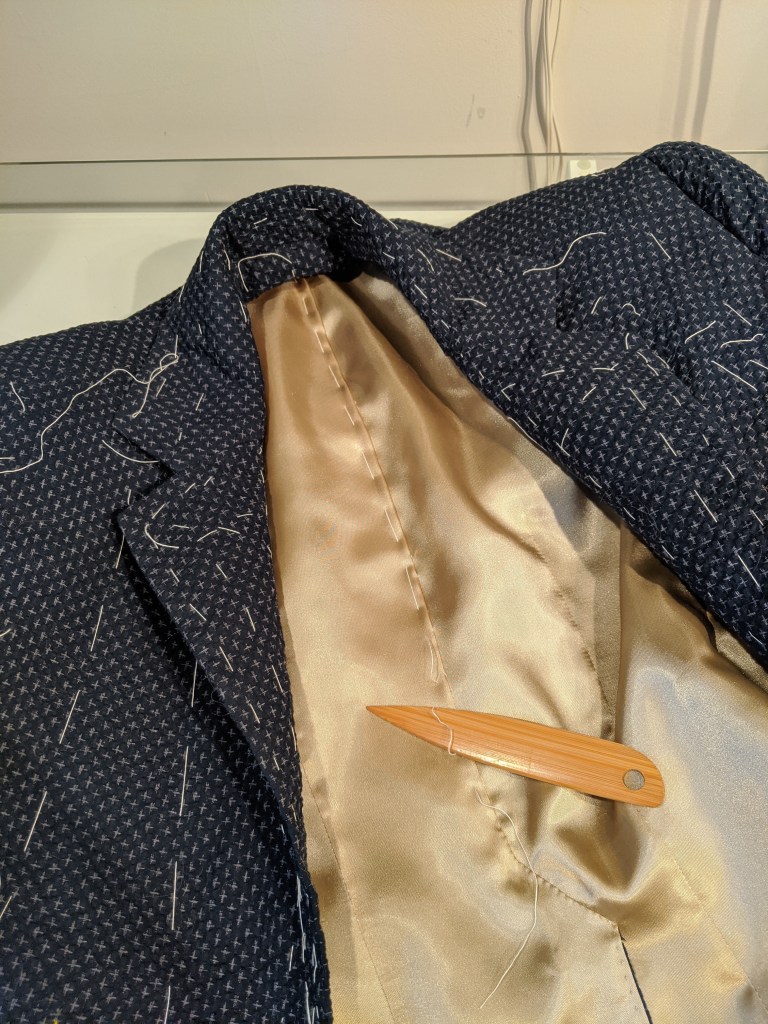
This project is almost complete. It just needs buttons and buttonholes. I ordered some buttons online, but they really aren’t looking right on this fabric. It was worth a try though. Our statewide “stay at home” orders are going to be gradually loosened starting May 1st. So it looks like I will have to venture out to my local JoAnn’s for buttons if it feels safe. But it’s a big “if”.
Have N95 — will travel
But only if it feels safe. I’m not about to jeopardize my health for buttons!
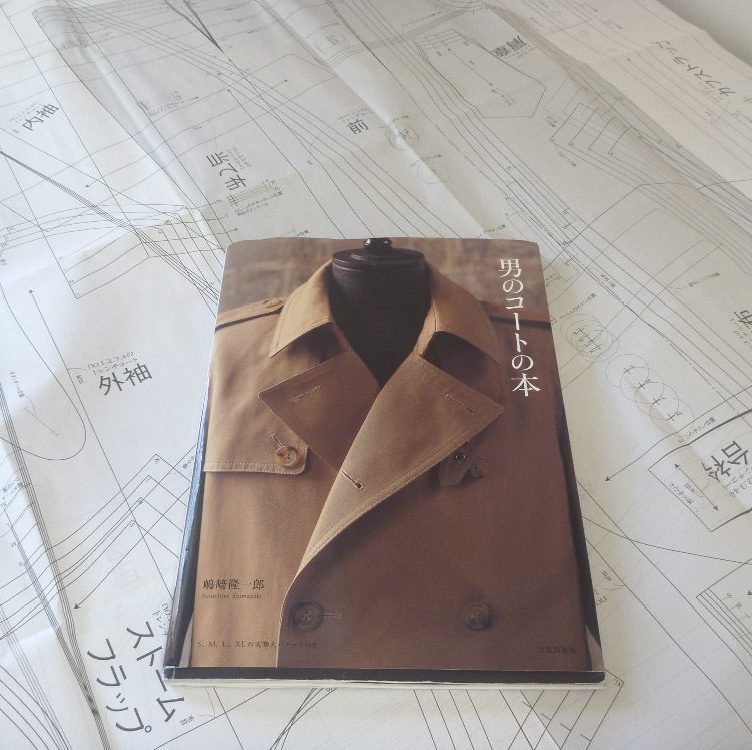

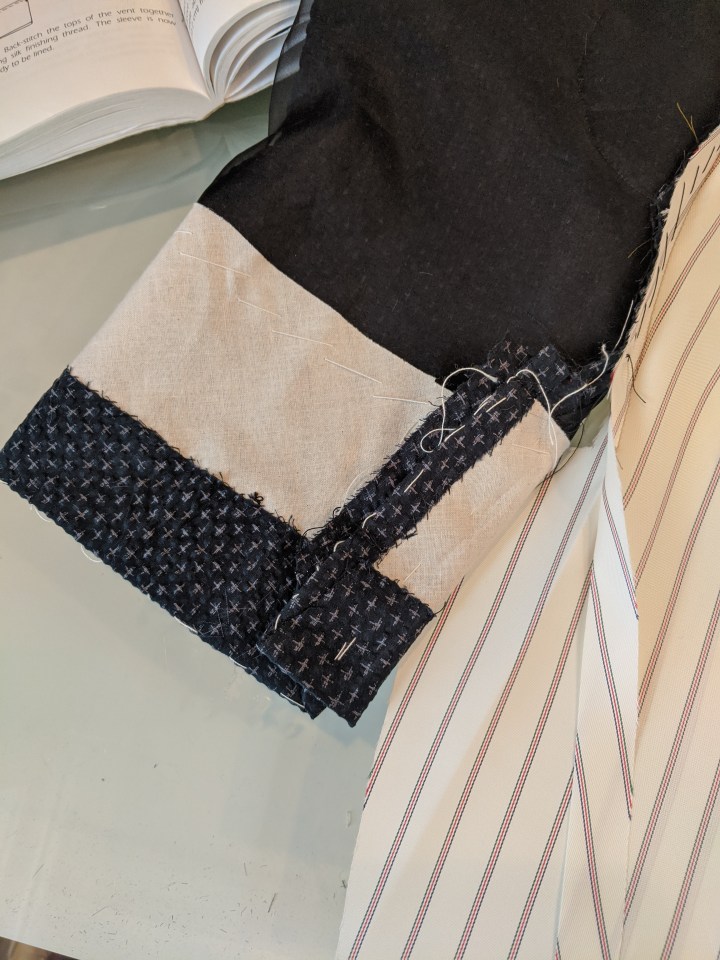
Beautifully detailed blog on your progress. A true bespoke blazer. I do love your “vintage” sewing machine. Looking forward to photos when it is all finished.
LikeLike
The concept of the handcrafted look being not a flaw in handmade clothing, but a lack in mass-produced clothing has piqued my interest, given me much food for thought… So glad I’m not the only one who hates slogging through the lining (I usually wind up feeling like a dunce and a fraud because I loathe it so much). Thanks for the process update, I find them both delightful and educational!
LikeLike
Nice!!! Your construction is gorgeous & your tips are much appreciated. (muslin as lightweight sleeve hem stabilizer! is a Yay! and Duh! moment for me) Can’t wait for the jacket reveal—your fabric choice was inspired.
LikeLike
looking so good! thanks for sharing all the details.
LikeLike
Don’t be surprised if there is a long line at JoAnn’s. They are open her in AZ but when I stopped by last Saturday to pick up serger thread the line stretched down the sidewalk past three other stores. I’m enjoying watching the jacket come together.
LikeLike
I appreciate that you are frank about how fiddly, frustrating, time-consuming and slippery all of the lining business is! I find it true for me also. And, like you, I soldier through and carry-on because the rewards of the finished product are gratifying and beautiful. Thank you for your honesty!
LikeLike
I love your writing, and applaud your fine work. I too find the lining of jackets to be the least satisfying, probably because there are so many truly horrid lining fabrics out there, and I feel like I have used every one of them at one time or another. (I make a lot of coats as a tailor for an opera company, and the budget doesn’t always permit the most luxe supplies! Our timeline doesn’t always permit following the Cabrera text to the letter, but I do what I can.) Jo-Ann’s here usually has a deplorable selection of fabric and buttons, but it is nice to actually see things in person and have a touch.
Your handwork looks exceptional: we’d hire you as a stitcher in a heartbeat! Enjoying the progress: stay safe!
LikeLike
Yes, I can stand it! And as usual learn a lot. Thank you for the details and editorial comments. 😉 A shameless plug for my local Boulder Colorado fabric store which has wonderful buttons – Elfriedes Fine Fabrics. I’d bet if you call and / or perhaps send a fabric sample, you’ll be pleased. Incidentally, they have mainly woven natural fabrics, and more of the classic sewing fabrics and things you (and I) like.
LikeLike
I think your title underestimates our interest!
Linings I don’t mind, but I often make them first and have them pressed and waiting on a hangar because like you I enjoy making the main part more.
LikeLike
Looking wonderful! Stay safe…
LikeLike
Amazing, painstaking, and beautiful.
Now about going to JoAnn’s for buttons…why not use the mail order buttons, and swap them out with something on a future trip to the Garment District?
Consider gloving and masking to visit thrift stores for a blazer or suit of old with buttons of “a certain caliber”?
JoAnn’s is great for thread, pattern book and magazine browsing, being in the presence of kindred others, and of course, filling your texture hunger as you walk the aisles and “have a moment” with the bolts that speak to you. I can’t imagine JoAnn’s selection of buttons would leave you doing anything but sporting the blazer behind a veil of tears.
LikeLike
I have discovered a button supplier, Button Bird.com, which has beautiful products, give it a look, such a well made/designed jacket deserves better than Joanne buttons.
LikeLike
Just visited ButtonBird.com, WOW! Curated selection, worthy of a visit.
Mary Beth, you are a solutionologist!
LikeLike
Not only can I stand it, I was avidly waiting for your post! What a beautiful jacket, the lining color is a very nice contrast. Looking forward to seeing the completed jacket modeled. Thanks for sharing the trials and triumphs of this project!
LikeLike
Thanks for sharing the deep dive, Cabrera really does make tailoring accessible to the layperson. All that hand stitching certainly adds character to your jacket and that is a sweet roll you have on the lapels. The pick stitching on the rear vent is a nice touch too, did you pick stitch any other parts? No doubt your buttonholes will be as awe inspiring as the rest of your project and like your other readers, I’m looking forward to seeing the finished product.
I have a light weight tailored jacket project using some cotton/nylon ripstop fabric and it looks like adding some organza may be just what I need too!
LikeLike
Wondering how you’d rate the pattern. I’ve been sewing along with a burda jacket pattern but it’s now in the naughty corner. First issue was the pockets (entirely my inexperience for that one now fixed) but now its the seam finishings. Its only supposed to be part lined but is apparently intending me to just leave those seam allowances unfinished – no thank you ! and now its a bit too late to be trying hong kong finishes on the seams when its mostly done. Just wondering if its worth shelling out for this pattern for better results or not ?
LikeLike
This pattern includes pattern pieces for a full lining. It has a rather unusual collar that includes a contrasting band. The pockets also have a contrasting band, but I skipped them completely. If you have a pocket method that works for you, by all means use it. That’s what I did.
Have you considered hand sewing a bias binding into your Burda jacket? I would totally try that before giving up. It may take more time, but think of the satisfaction knowing you rescued it from the scrap heap!
LikeLike